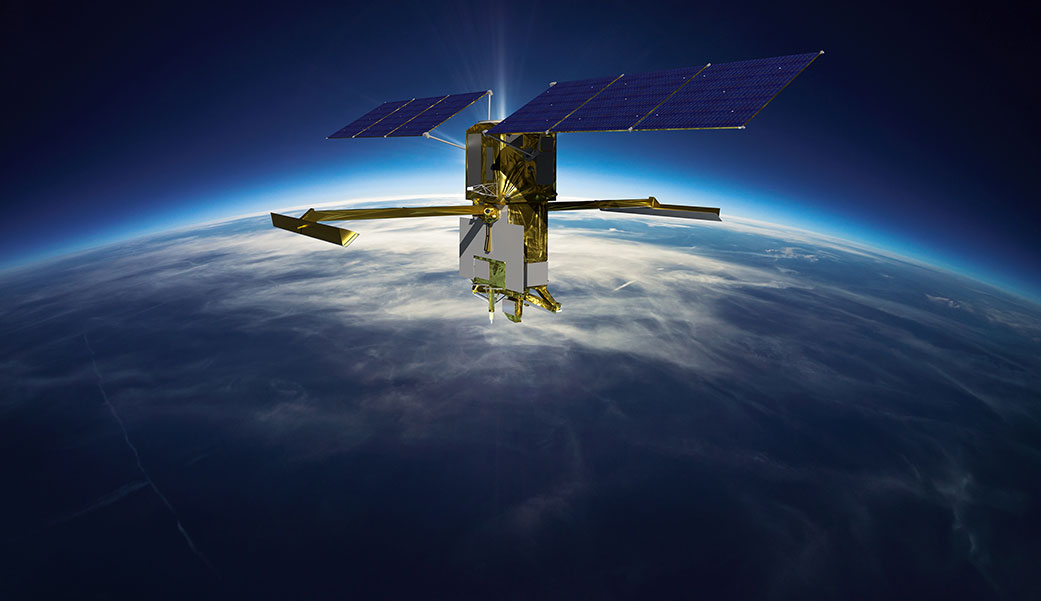Interview : Louise Rousselet - Physical oceanographer and science officer at SWOT AdAC
Louise Rousselet did her PhD at the Institut Méditerranéen d'Océanologie (MIO, Université d'Aix-Marseille), followed by a post-doc at the Scripps Institution of Oceanography (SIO, University of California San Diego UCSD), and is now at LOCEAN-IPSL. Louise is the science officer of SWOT AdAC and will be taking part in the BioSWOT-Med campaign.
SWOT AdaC : What is your area of research and how did you choose it?
Louise Rousselet : I study ocean circulation from large to small scales to better understand global heat and salt transport and exchanges between major ocean basins. I am also interested in the influence of currents (of physics more generally) on the distribution of biogeochemical and biological elements, particularly to understand how fine-scale structures (fronts, eddies) can structure and influence phytoplankton dynamics (horizontal and vertical distribution, growth rates...). To do this, I use data from global numerical models, in situ data and satellite measurements, which I analyse using Lagrangian tools (numerical particle trajectories). This area of research is of particular interest to me because it provides a link between the major fields of oceanography (physics/biogeochemistry/biology) and enables us to understand the ocean as a complex interconnected system. Understanding the physical environment in which phytoplankton species evolve helps to explain certain behaviours and patterns.
AdAC SWOT What is the link between your area of research and SWOT?
Louise Rousselet : The SWOT mission will make it possible to measure more finescales from space. It will give me access to higher-resolution, global-scale data. This will enable me to better understand how fine-scale structures influence biology on a global scale and not just in scattered regions sampled at high resolution. SWOT will make a major contribution to my research theme by providing data at high temporal and spatial frequency. From the high-resolution maps of surface currents I will be able to derive numerous Lagrangian diagnostics that detect fine-scale structures in order to locate them better.
AdAC SWOT What fascinates you about SWOT?
Louise Rousselet : What fascinates me about SWOT is the diversity of scientific questions that this mission brings together: from problems linked to coastal circulation to the study of internal and vertical transport.
AdAC SWOT As SWOT AdAC's Science Officer, you will be working with Consortium members to support their in situ campaigns, comparing results from different sites and developing near-real-time sampling strategies. But you'll also be taking part in a campaign at sea. What excites you about this campaign and how will you contribute?
Louise Rousselet The BioSWOT-Med campaign in which I will be taking part will bring together around thirty scientists from different fields: from cellular and molecular biology to genetics, to understand the ecosystem observed, chemists and biogeochemists who will be assessing carbon, nitrogen and phosphate balances, not forgetting physicists specialising in turbulence or measuring vertical velocities. So it's a very positive and rewarding dynamic for my research work. What's exciting about BIOSWOT-Med is that it's a campaign specifically designed for the study of physical-biological coupling on a fine-scale. So all the aspects and measurements of the campaign will shed new light on the questions of the influence of fines-scales on biology. For this campaign I am part of the 'physics' team responsible for the sampling strategy and physical measurements to characterise the study area. I am also responsible for setting up the SPASSO software (Software Package for an Adaptive Satellite-based Sampling for Oceanographic cruises), which provides daily maps of satellite data and Lagrangian diagnostics. These are used to guide the campaign in real time in a region of interest by analysing the environmental parameters detected by satellite. On board the oceanographic vessel, I will also be responsible for physical sampling (ADCP, MVP).
AdAC SWOT What are your plans after the campaign?
Louise Rousselet : After the BIOSWOT-Med campaign (and all the other SWOT-AdAC campaigns) I'll definitely be taking a bit of a holiday! The SWOT fast sampling period is going to be very busy between helping to prepare all the AdAC SWOT campaigns and also supporting BIOSWOT-Med. Once the campaigns are over, I'll be able to concentrate more on the scientific side of things. I'll be involved in analysing the data measured (physical data). I would also like to link the observations collected on the different cross-over regions of the SWOT satellite in order to provide a global image of the fines-scales observed almost simultaneously during SWOT's fast sampling phase. This work could provide a better understanding of the variability of fines-scales at the scale of the global ocean.
BioSWOT-Med blog





